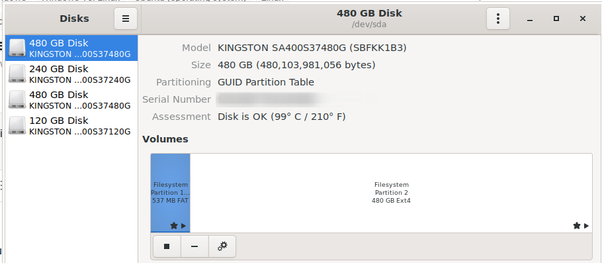
In the spirit of disclosing my renewed quest towards currying perfection let me discuss another more serious project that I am currently embarking upon.
Linux has been one of the main focuses of this blog (see, among others: Ubuntu backup strategy), and I’ve been using it as my day-to-day operating system for more than ten years at this stage.
How did it all begin?
My laptop had reached the ominous Windows Blue Screen of Death (BSoD) stage and all recovery efforts had failed. My friend’s brother suggested I try Linux. And the rest, as they say, is history.
Since then, I’ve been lucky enough to use Linux both personally and professionally — since the advent of easy virtualization a Windows machine on VMWare Workstation Player of Virtualbox is generally all I need to handle the odd Windows-centric task — although I keep a bare metal SSD in my system just in case that’s not enough.

My interest in pursuing an LPIC certification is a little more recent.
I don’t have a specific objective or destination in mind. As a tech-focused writer, it probably won’t hurt in trying to woo clients — or at least to do more challenging and advanced work for those in the Linux/cloud computing ecosystem.
And, as I already play around with some AWS service, it might start me down an interesting path towards something more — LinuxAcademy.com has plenty of options and certification pathways, crossing over to cybersecurity and topics related to serverless cloud architectures.
Speaking of which, Linux Academy and Udemy have been my go-to training resources so far and I’ve found both course surprisingly engaging.
For those that have been using Linux on the desktop for a long time and therefore think that passing the first Linux Professional Institute (LPI) exam, Linux Essentials (010-160) will be a cinch, you might be in for a nasty surprise.
Configuring Linux as a server OS requires a lot of command line interface (CLI) knowledge — and the curriculum provides some theoretical underpinning, like licensing models, that you have no need to know when simply spinning up an Ubuntu installation, or a VM.
In other words, so far I’m finding the coursework but challenging but doable— and there’s some unnecessary stuff that I’m glossing over because I know it backwards and forwards.
The cool thing about the LPI exams is that all you need to do to take one is find your nearest Person testing center. You pick up an exam voucher for just over $100 and can book one at pretty short notice. I found one in two days’ time — but think that would be too much cramming. If you fail, you can take the exam in a week. So as I’m in no particular rush and am not in a mood to waste multiple $100s I’m focusing on getting the knowledge under my belt and then making sure I have what it takes by using practice exams.
Above all, it feels great to be engaging in some Continuous Professional Development (CPD). I’ve had my eye on the Hubspot certifications for a while too, but frankly, I find learning Linux a more rewarding challenge.
For those thinking about it — I say dive right in. Technology and cloud computing are here to say. And Linux is highly relevant in server-land.


